Surge Protection: Requirements, Changes, and Selection
by Jeff Babineaux, PE on Apr 6, 2023 10:30:00 AM
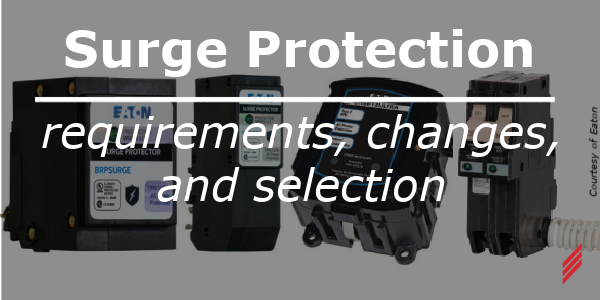
Prior to the 2020 NEC, you probably didn’t come across a requirement for surge-protective devices (or SPDs) in the code unless you were in some special situations. In fact, the 2017 NEC only tells you what they are and where they are permitted (article 285), requires them for wind electric systems (694), fire pumps (695), industrial machinery (670), emergency systems panelboards (700), and critical operating power systems (or COPS) (708), and tells you to button them up in classified locations in 501.35 & 502.35. These requirements have expanded and moved around a lot in the code, so we will stick to referencing 2020 NEC unless noted otherwise below.
The science behind surge protection has come a long way, and many more household appliances and electronics are sensitive to lighting strikes and downed power lines than in previous years. But what is a surge-protective device, and where is it required? How do you go about selecting the right one for your application? The answers to these questions have changed a lot in the recent years, with even bigger implications on the horizons.
What is a Surge-Protective Device?
Surge-protective devices, sometimes called surge protectors or SPDs, are not just power strips, and many power strips that you see in the store provide no protection at all against lightning strikes or downed power lines. The main function of a surge-protective device is to protect against the transient voltages that lightning strikes and downed power lines produce. This transient voltage is especially dangerous to sensitive electronics which used to only include computers and TVs, but the rise of smart appliances has introduced a new area of vulnerability. That’s just part of the reason why a surge protector power strip isn’t enough anymore.
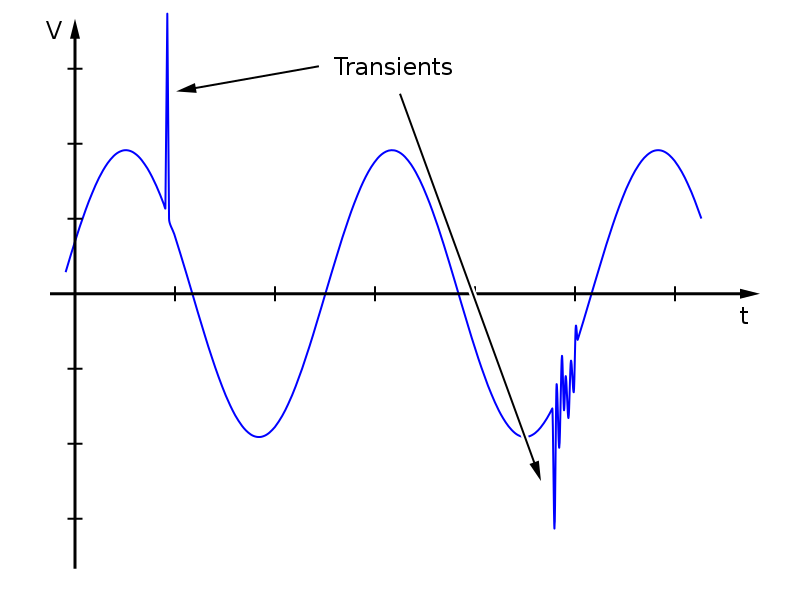 Image: 1 Transient voltage waveform
Image: 1 Transient voltage waveform
Where are SPDs Required?
As we mentioned earlier, there were a handful of special situations that said you must use an SPD in the 2017 code, but as of this article’s publication over half of the US is now on NEC 2020. These rules will apply to you if you’re doing new construction or a big enough repair, but that also means that there are new technologies to consider that would protect your property even if they aren’t legally required through your local building official’s code adoption.
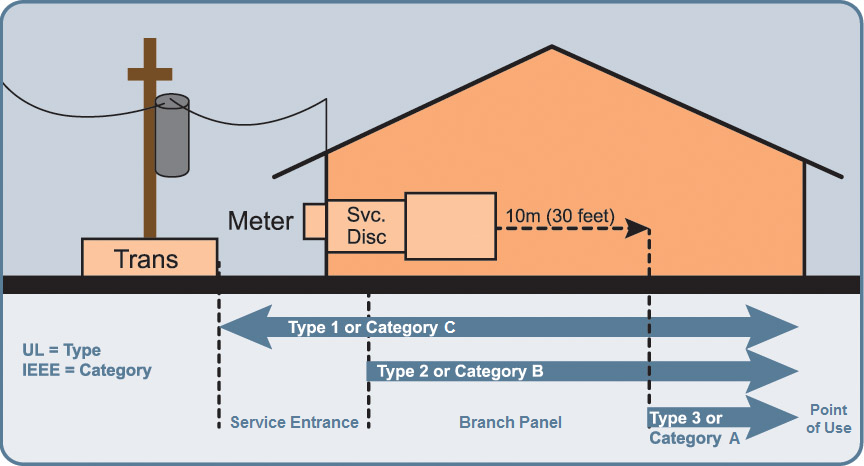
Image: 2 Surge protector location by class
Now that we know we need surge-protective devices, let’s break down requirements by type:
Type 1
Type 1 surge-protective devices are at the utility- or service-level. These would typically be installed at the supply-side of the service disconnect of your home or office. Because they are installed on the utility-side of your main breaker, they are not as common and harder to access and replace than type 2. NEC 2020 requires a type 1 or type 2 surge-protective device on dwelling units in 230.67.
Type 2
Type 2 surge protectors are the most common form of whole-home surge protection. Check with your manufacturer’s installation instructions, but these are typically wired on a new multi-pole breaker closest to where the SPD will be mounted, many times directly to the panelboard itself. As mentioned in the previous section, NEC 2020 requires a type 1 or type 2 surge-protective device on dwelling units in 230.67.
Image 3: Example of a whole-home surge-protective device
Type 3
Type 3 surge protectors are the most common that you can find. These are the “power strips” that are intended as the last line of defense that a consumer can buy and install before a sensitive piece of equipment. The NEC is silent on type 3 surge protectors, so it’s up to you to decide if this added layer of protection is worth it.
Type 4
Type 4 is the last category of surge-protective device and reserved for components inside of manufactured equipment. NEC 242.18 restricts installation of type 4 SPDs to the equipment manufacturer, so we won't go into any further details in this article.
The Immediate Future, and What That Means for Surge Protection
NEC 2023 is out and has some interesting developments for where surge protection is required. They are still silent on requirements for class 3 SPDs, but the occupancies where class 1 or 2 surge protection is required are expanding. Where protection was only required in dwelling units, NEC 2023 will also need SPDs installed in many places that could also be considered a residence, from dormitory units to hotels or motels, and even in the patient sleeping areas of nursing homes. There’s also new language requiring surge protection for power going to fire panels in 760.33, but this feels more like clarification where a governmental authority having jurisdiction (or AHJ) hasn’t already declared fire panels as COPS.
What Rating of Surge-Protective Device Do I Need? Ratings of Class 1 and 2 SPDs
To get the right SPD, first determine the class of protection that you need and then select an appropriate kA rating. Informational note! This kA rating (discharge current rating, or In) is not the same as the interrupting rating of overcurrent protection (amps interrupting current, or AIC). This is a lot of gray area, but Emerson has generated some helpful guidance for us. In their white paper “How to Properly Size Surge Protective Devices” they provide a “3, 2, 1 Rule of Thumb” recreated here for informational purposes, and a second version based on panel rating below it. Keep in mind that IEEE Standard 1100 recommends cascading protection, so sometimes a lower rating makes sense on the panels below. The white paper is worth a read if you have time to take it in, which is beyond the scope of this post. Ratings below are only for class 1 and 2 SPDs, and do not include information on class 3, which comes in the following paragraphs.
.jpg?width=528&height=174&name=Screenshot%202023-04-05%20131122%20(1).jpg)
Ratings of Class 3 SPDs
While the FAQs in the Surge Protection Institute at NEMA says that more reputable manufacturers do not provide ratings in joules, most class 3 surge-protective devices still use this older method. Generally, the devices with a higher joule rating are better for more sensitive electronic devices. Because every wire in the house is a potential entrance point for surges, be sure that these devices include ports for COAX or ethernet to protect all the things in your home that are physically connected to the internet.
For sizing, we can piggyback off Emerson’s 1, 2, 3 Rule of Thumb and consider 1,000 joules for minimal protection, up to 2,000 joules for small appliances, and up and above 3,000 joules for more critical equipment like home theater, computers, gaming consoles and the like. Take these ratings with a grain of salt, however, as they can be skewed by misleading tests. Because of the way that UL defines Class 3 SPDs, note that these are not allowed to be installed within 10 meters (30 feet) of the service panel. Anything closer must be listed as a Class 2 SPD.
Conclusion and Further Reading
Getting the right surge-protective device to meet your needs shouldn’t be a mystery. While a rule of thumb is good, keep an eye on official guidance from NEMA Surge Protection Institute and NEC code updates. As the technology is better understood, more definitive guidance will become available.
What about your own personal experience? What best practices have you come across for surge protection, and what areas do you feel like will improve in the coming years?
Emerson’s guidance on surge protectors, including their “3, 2, 1 Rule of Thumb”. https://www.appleton.emerson.com/documents/white-paper-how-to-properly-size-surge-protective-devices-solahd-en-7635026.pdf
NEMA Surge Protection Institute’s guide to surge class, type, and location. https://www.nemasurge.org/spd-location/
An oldie with some outdated ideas, NIST offered Special Publication 960-6 to help us understand what surges are and how to protect from them. https://www.nist.gov/publications/surges-happen-how-protect-appliances-your-home
Sources:
Image 1 Transient voltage waveform: https://commons.wikimedia.org/wiki/File:Transients.svg
Image 2 Surge protector location by class: https://www.nemasurge.org/wp-content/uploads/2011/09/location-categories.png
Image 3 Example of a whole-home surge-protective device: https://www.eaton.com/mdmfiles/PDM93055253/ES-RWDD-RE-COMPLETE-SURGE-PROTECT_FM/500x500_72dpi
About the Author
Jeff has a B.S. in Electrical Engineering from Louisiana Tech University. Prior to coming to Hallam-ICS, Jeff had 7 years of experience working in prefab construction for mechanical and electrical buildings and skids. He holds a professional engineering license in multiple states, participates in all phases of the project design from concept through construction, and cooks a mean gumbo.
Read My Hallam Story
About Hallam-ICS
Hallam-ICS is an engineering and automation company that designs MEP systems for facilities and plants, engineers control and automation solutions, and ensures safety and regulatory compliance through arc flash studies, commissioning, and validation. Our offices are located in Massachusetts, Connecticut, New York, Vermont and North Carolina and our projects take us world-wide.
You May Also Like
These Related Stories
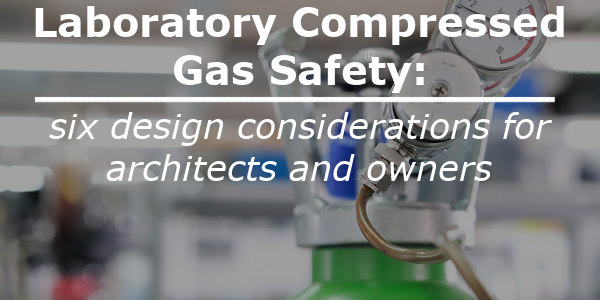
Laboratory Compressed Gas Safety: Six Design Considerations for Architects and Owners
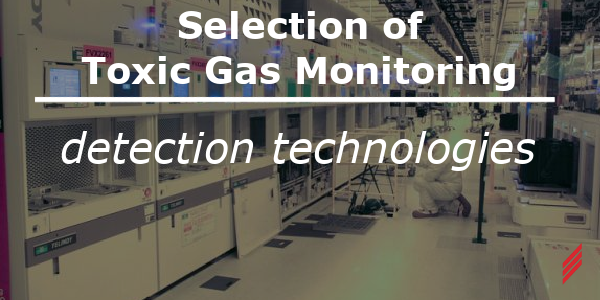
Selection of Toxic Gas Monitoring Detection Technologies



No Comments Yet
Let us know what you think